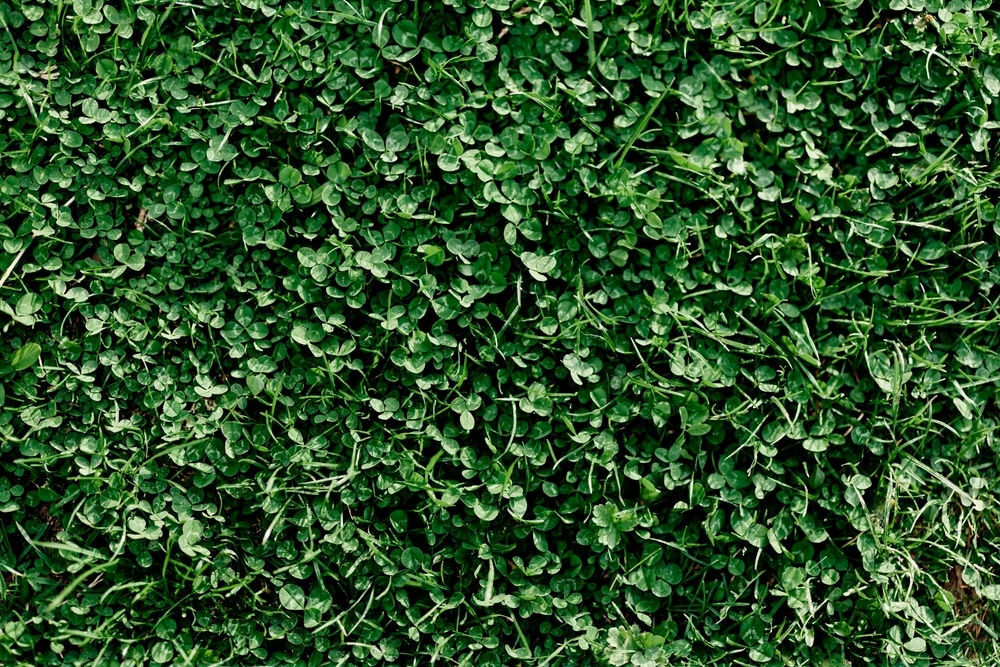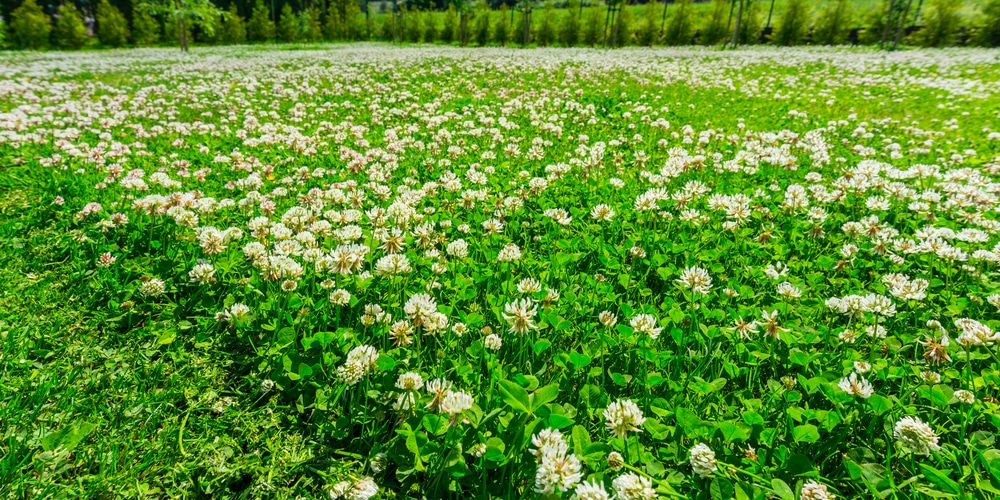Microclover lawns are gaining popularity by the day. They are widely debated, with some people swearing by them and others having a deep disdain for them. As their popularity grows, the need to learn about them grows. Here you’ll find everything you need to know about having a microclover lawn.
What Is Microclover?

Microclover is a smaller variety of white clover. White clover typically gets labeled as a weed, which is very common in our lawns. Microclover typically has smaller flowers than standard white clover. Clover and microclover are popular ground cover options due to their lower maintenance needs than grass.
Why Choose a Microclover Lawn?

There are many reasons to choose a microclover lawn, whether you mix it with grass or transition your yard completely. There are a lot of environmental benefits to switching from grass to clover, and there are a lot of aesthetic benefits.
It Makes Good Ground Cover
Clover makes for excellent ground cover. Its dense leaves form a thick layer over the ground while not growing too tall. It looks great when planted around paving stones. It provides an aesthetically pleasing and uniformly green ground cover but with less hassle than grass when in good living conditions.
Why Not Regular Clover?
Microclover is fantastic at mimicking a traditional lawn. We can cut it shorter than you can with white clover while retaining its leaves. It grows more densely than clover because of its small size. When it comes down to it, though, clover and microclover offer the same benefits as a grass lawn, but on a different scale.
Can You Have a Mixed Lawn?
Microclover and grass go very well together. They have a similar look, but microclover also benefits grass. Microclover adds nitrogen to the soil it is in, while grass needs nitrogen. That allows both plants to stay green and healthy longer.
When Do You Plant It?
You should plant your microclover in the early spring. If you plan on overseeding, which is planting it over existing grass, you can plant it in the late summer or early fall. That is the best time to overseed your lawn. When you first plant your microclover seeds, it’s essential to water them often. They germinate better with more moisture in the soil.
How Do You Take Care of It?
You don’t need to water microclover as often as most other lawn options. It also requires less water when you do water it.
Microclover is reasonably drought-tolerant, but it’s important to continue watering it when possible. It doesn’t need much water, though. In some places, you can get away with not watering it at all.
Microclover needs a lot of sunlight. When planted in the shade, it may not stay green. However, in sunny spots, it thrives and retains its beautiful green color. In some areas, it can remain green year-round, depending on how cold it gets in the winter.
Do You Have to Mow It?
If you don’t want to mow your microclover lawn, you can get away with not doing it. If you want to cut it, find a height you like your microclover at and mow it as often as you need to maintain the length.
What Does Microclover Do For the Environment?
Microclover being better for the environment than our traditional grass lawns is commonly brought up when debating the two. What does it do for the environment, though? Why is it better?
How Is It Better Than Grass Lawns?
Microclover requires less water than grass lawns, which require a lot of water weekly. Microclover needs a lot of water while it first grows, but once it’s fully grown, you can cut back on how much you water it.
Mowing grass lawns is necessary to keep them looking tidy. Depending on where you live, you can even get a fine for not mowing your lawn. With a microclover yard, you don’t have to mow nearly as often. Americans use a lot of gasoline for their lawnmowers every year. A microclover lawn cuts down on that gas usage when you mow less.
If you don’t want to switch to a microclover lawn to lower your gas use with your mower, you can get an electric mower or a reel lawn mower, depending on the size of your lawn.
Even a mixed lawn is better than grass alone. Paired with grass, it lowers the maintenance needs of the grass due to the nitrogen it puts in the soil. That acts as a sort of fertilizer that leads to healthier grass.
How Does it Help Pollinators?
Clover lawns are great for pollinators. They grow flowers that help pollinators like bees while also pleasing the eye. The flowers of microclover provide food for our pollinators. Since the flowers grow low to the ground, you can mow your microclover lawn without mowing them down, which is a win-win situation.
What Are the Downsides?
Of course, like with most things, there are a few downsides to having a microclover lawn. Microclover seed can be costly, but you can reduce that cost by mixing your clover with grass.
Another issue is that some regions just aren’t suitable for microclover lawns. If your region doesn’t meet the microclover’s needs, with lots of sun being the largest, you may not get the picture-perfect green lawn advertised.
This goes down to even individual houses. You could live somewhere perfect for microclover, but your yard may not have good conditions, like being too shady.
A mixed lawn is excellent for lawns with a lot of shade. The grass will do well in the shady areas that microclover doesn’t do well in.
Now You Know!
Hopefully, this information was enlightening and helped you decide what to do with your lawn. Microclover is beautiful and great for the environment while being slightly hardier than grass. It offers a beauty you often have to work hard to obtain with a traditional grass lawn but with half the effort.
Enjoy your lawn!
